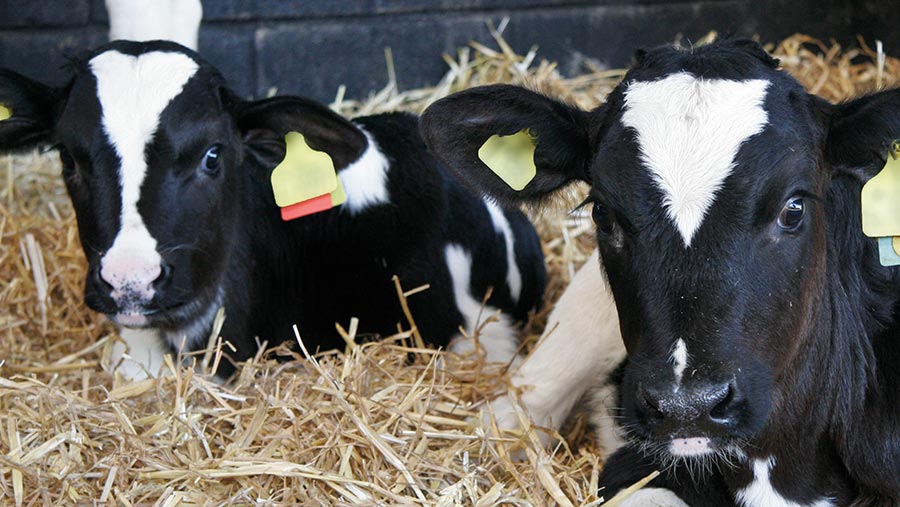Calf health survey identifies gaps in management
 © Tim Scrivener
© Tim Scrivener More than three-quarters of farmers want to prioritise calf health and reduce antibiotics use, according to a survey by Mole Valley Farmers.
However, 81% have used antibiotics to treat respiratory disease in the past six months, and nearly half of respondents are not vaccinating against the infection.
Vet Andy Adler, of Molecare Farm Vets, says one way to reduce antibiotics use in calves is for farmers to work with their vets to produce farm-specific vaccination plans.
See also: How scanning can detect early pneumonia in calves
“Farmers need to understand which respiratory pathogens they have on farm and have a preventative health strategy in place, so that they manage the environment the animals are living in, the food they’re getting and the immunity they get through colostrum and vaccination,” says Mr Adler.
The survey of 540 farmers identified pneumonia as one of the main reasons they thought calves were failing to hit target growth rates. However, 47% were not monitoring growth.
Asked about age at first calving, 53% indicated that their heifers were not achieving the 24-month target age. Reaching this target helps lower rearing costs and carbon footprint, and optimises milk yields, says Mr Adler.
“Those that measured colostrum and tracked growth rates were more likely to hit this target, which highlights the value of measuring.”
He recommends weighing at weaning, and as regularly as possible through to service, so that farmers know if their animals are on track and intervene to find out why if they are not.
Poor growth rates can be caused by several factors including dietary imbalances, worm challenges or trace element deficiencies.
